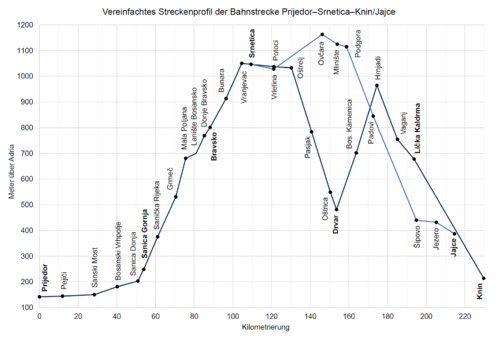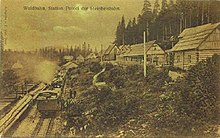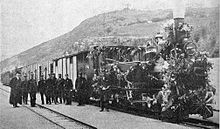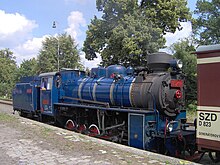Steinbeisbahn
| Prijedor - Srnetica - Knin / Ribnik Gornji / Jajce | ||||||||||||||||||||||||||||||||||||||||||||||||||||||||||||||||||||||||||||||||||||||||||||||||||||||||||||||||||||||||||||||||||||||||||||||||||||||||||||||||||||||||||||||||||||||||||||||||||||||||||||||||||||||||||||||||||||||||||||||||||||||||||||||||||||||||||||||||||||||||||||||||||||||||||||||||||||||||||||||||||||||||||||||||||||||||||||||||||||||||||||||
|---|---|---|---|---|---|---|---|---|---|---|---|---|---|---|---|---|---|---|---|---|---|---|---|---|---|---|---|---|---|---|---|---|---|---|---|---|---|---|---|---|---|---|---|---|---|---|---|---|---|---|---|---|---|---|---|---|---|---|---|---|---|---|---|---|---|---|---|---|---|---|---|---|---|---|---|---|---|---|---|---|---|---|---|---|---|---|---|---|---|---|---|---|---|---|---|---|---|---|---|---|---|---|---|---|---|---|---|---|---|---|---|---|---|---|---|---|---|---|---|---|---|---|---|---|---|---|---|---|---|---|---|---|---|---|---|---|---|---|---|---|---|---|---|---|---|---|---|---|---|---|---|---|---|---|---|---|---|---|---|---|---|---|---|---|---|---|---|---|---|---|---|---|---|---|---|---|---|---|---|---|---|---|---|---|---|---|---|---|---|---|---|---|---|---|---|---|---|---|---|---|---|---|---|---|---|---|---|---|---|---|---|---|---|---|---|---|---|---|---|---|---|---|---|---|---|---|---|---|---|---|---|---|---|---|---|---|---|---|---|---|---|---|---|---|---|---|---|---|---|---|---|---|---|---|---|---|---|---|---|---|---|---|---|---|---|---|---|---|---|---|---|---|---|---|---|---|---|---|---|---|---|---|---|---|---|---|---|---|---|---|---|---|---|---|---|---|---|---|---|---|---|---|---|---|---|---|---|---|---|---|---|---|---|---|---|---|---|---|---|---|---|---|---|---|---|---|---|---|---|---|---|---|---|---|---|---|---|---|---|---|---|---|---|---|---|---|---|---|---|---|---|---|---|---|---|---|---|---|---|---|---|---|---|---|---|---|
| Route length: | 392 km | |||||||||||||||||||||||||||||||||||||||||||||||||||||||||||||||||||||||||||||||||||||||||||||||||||||||||||||||||||||||||||||||||||||||||||||||||||||||||||||||||||||||||||||||||||||||||||||||||||||||||||||||||||||||||||||||||||||||||||||||||||||||||||||||||||||||||||||||||||||||||||||||||||||||||||||||||||||||||||||||||||||||||||||||||||||||||||||||||||||||||||||
| Gauge : | 760 mm ( Bosnian gauge ) | |||||||||||||||||||||||||||||||||||||||||||||||||||||||||||||||||||||||||||||||||||||||||||||||||||||||||||||||||||||||||||||||||||||||||||||||||||||||||||||||||||||||||||||||||||||||||||||||||||||||||||||||||||||||||||||||||||||||||||||||||||||||||||||||||||||||||||||||||||||||||||||||||||||||||||||||||||||||||||||||||||||||||||||||||||||||||||||||||||||||||||||
| Maximum slope : | Prijedor – Lička Kaldrma: 29 ‰ Srnetica – Jajce: 24 ‰ |
|||||||||||||||||||||||||||||||||||||||||||||||||||||||||||||||||||||||||||||||||||||||||||||||||||||||||||||||||||||||||||||||||||||||||||||||||||||||||||||||||||||||||||||||||||||||||||||||||||||||||||||||||||||||||||||||||||||||||||||||||||||||||||||||||||||||||||||||||||||||||||||||||||||||||||||||||||||||||||||||||||||||||||||||||||||||||||||||||||||||||||||
| Minimum radius : |
Prijedor – Lička Kaldrma: 45 m. Srnetica – Jajce: 40 m |
|||||||||||||||||||||||||||||||||||||||||||||||||||||||||||||||||||||||||||||||||||||||||||||||||||||||||||||||||||||||||||||||||||||||||||||||||||||||||||||||||||||||||||||||||||||||||||||||||||||||||||||||||||||||||||||||||||||||||||||||||||||||||||||||||||||||||||||||||||||||||||||||||||||||||||||||||||||||||||||||||||||||||||||||||||||||||||||||||||||||||||||
|
||||||||||||||||||||||||||||||||||||||||||||||||||||||||||||||||||||||||||||||||||||||||||||||||||||||||||||||||||||||||||||||||||||||||||||||||||||||||||||||||||||||||||||||||||||||||||||||||||||||||||||||||||||||||||||||||||||||||||||||||||||||||||||||||||||||||||||||||||||||||||||||||||||||||||||||||||||||||||||||||||||||||||||||||||||||||||||||||||||||||||||||
| Route profile of the railway line Prijedor – Srnetica – Knin / Jajce. | ||||||||||||||||||||||||||||||||||||||||||||||||||||||||||||||||||||||||||||||||||||||||||||||||||||||||||||||||||||||||||||||||||||||||||||||||||||||||||||||||||||||||||||||||||||||||||||||||||||||||||||||||||||||||||||||||||||||||||||||||||||||||||||||||||||||||||||||||||||||||||||||||||||||||||||||||||||||||||||||||||||||||||||||||||||||||||||||||||||||||||||||
The Steinbeis railway was originally a forest railway planned railway line of the Bosnian forest industry corporation Otto Steinbeis (BIFAG) in Bosnia and Herzegovina . The narrow-gauge railway in Bosnian gauge of 760 mm opened up the north-western forest areas of Bosnia and was operated by the public limited company for wood export. After the Second World War, the lines of the former Steinbeisbahn were part of the narrow-gauge network of the Yugoslav State Railways (JDŽ / JŽ).
history
Habsburg monarchy
prehistory
In 1892 the Bavarian entrepreneurs Otto von Steinbeis and Benjámin Kállay signed a 20-year contract for the kuk Bosnian-Herzegovinian state administration for the forestry use of a 450 km² forest area on the Sana river between Dobrljin , Jajce and Drvar . The first forest railway was built in 1893 and the sawmill in Dobrljin went into operation in 1894. In 1898 measurements were made for the construction of a forest railway from Knin to the company's Drvar site and on to Oštrelj . The steep stretch from Drvar to the mountains northeast of it would have been overcome with a cable car .
In the 1890s, the Bosnian-Herzegovinian state administration planned an extension of the Lašva – Donji Vakuf – Bugojno railway to Split (Spalato) as the Spalato Railway . The Hungarian government prevented this project because it feared competition with its Zagreb – Rijeka railway line and lower customs revenues.
Railway construction Knin – Čardak
After Kállay and Steinbeis signed a contract in August 1900, the 102-kilometer route from Knin to Oštrelj was opened on March 20, 1902 with a four-month delay . In Knin in the Dalmatian region , the wood products were reloaded onto the standard-gauge route and brought to Šibenik , where they were shipped by the company's own shipping company. The route was not built as a forest railway as originally planned, but similar to the standards of the Bosnian-Herzegovinian State Railways (BHStB) with 13.5 kg / m heavy rails, 29 per thousand maximum gradient and 40 meters minimum radius. Both Kállay and Steinbeis had achieved their goals. Kállay received the first section of the rail link from Bosnia to Dalmatia and Steinbeis's investments made a good return. Because there was no state support for this railway construction, Hungary could only protest verbally.
In 1903 the Steinbeisbahn was extended from Oštrelj to Srnetica in order to open up the wing sections of the forest railways there. Because the blows there were gradually exhausted, the BFIAG extended its line until 1905 around 55 kilometers to Čardak, where a new wood collecting point was built, and to Ribnik Gornji . Although the line was not a public railway, rail mail services between Knin and Oštrelj began in July 1910 .
Railway construction Srnetica – Prijedor
Due to the Balkan Wars of 1912–1913, a connection between the Steinbeis and the standard gauge kuk military railway Banjaluka – Doberlin became a strategic goal of the Bosnian-Herzegovinian state administration in order to enable troop transports. The BFIAG was looking for new fields for its cellulose factory in Drvar and applied for a concession for a route from Srnetica to Grmeč on July 4, 1912 without success .
During the favorable course of the Balkan War for Serbia , the war and finance ministries achieved a coup. The then 74-year-old Steinbeis was looking for a succession plan for his BFIAG. After the state parliament rejected a purchase because of the poor financial situation, Finance Minister Leon Biliński signed a secret contract with Steinbeis on May 16, 1913, which included the purchase of 60 percent of the shares and their payment in 19 annual installments . On May 21, 1913, BFIAG was authorized by the state administration to build a "forest railway" from Srnetica to Prijedor . Hungary again protested in vain against the railway construction privately financed by Steinbeis. As early as autumn 1914 - the First World War had just started - the line was opened to traffic. Instead of the Spalato Railway blocked by Hungary, Austria now had an alternative connection to the Adriatic Sea .
First World War, Čardak – Jajce military railway
Because of the growing fear of Italy entering the war , Oskar Potiorek , the commander-in-chief of the Balkan armed forces, awarded BFIAG the contract to build the Čardak – Jajce link on March 22, 1915 . In Jajce it had a connection to the also narrow-gauge Bosnian-Herzegovinian State Railway (BHStB). Due to heavy rainfall and a lack of skilled workers, the route could not be opened as planned in September, but only on January 10, 1916. Although it was built as a military railway, Hungary requested its demolition after the war ended.
The Čardak – Jajce link was owned by the Austro-Hungarian Military Railway, but was operated by the Steinbeisbahn. In addition to the Narentabahn of the BHStB to Metković, it represented a second connection to the Adriatic Sea to Split . Due to the light rails with a weight of only 13.75 kg per meter and poorly performing locomotives, only one pair of trains ran daily during the First World War .
Kingdom of Yugoslavia

After Otto Steinbeis had sold his BFIAG to the Bosnian state government in 1913, the company came into the ownership of the Kingdom of Serbia, Croatia and Slovenia in 1919 under the Versailles Peace Treaty and was given the name ŠIPAD. At the end of the 1930s, ŠIPAD was one of the largest producers of timber in Europe.
The reloading of the wood in Knin for onward transport with the standard-gauge line to the port of Šibenik made the transport of wood more expensive. In 1924, ŠIPAD proposed building its own narrow-gauge line to the port city, which would also have been 68 kilometers shorter than the existing standard-gauge line. The project did not materialize because in Split it was feared that the extension of the narrow-gauge railway would pull traffic away from its own port. Since the Lika Railway started operating in 1925, the routes from Knin to Split and Šibenik have been connected to the Central European standard gauge network. In 1935/36, instead of the narrow-gauge extension to Šibenik, it was decided to build the standard-gauge line Bihać – Knin .
Second World War
After the occupation of Yugoslavia in the Balkans campaign in April 1941, the Steinbeisbahn came to the Croatian State Railways (HDŽ) together with the other Bosnian-Herzegovinian railways . The section Knin – Drvar was in the Italian zone of influence and was actually operated by the 2nd Sezione Militare the Esercizio (Military Operations Department). The armies of the occupying powers were dependent on the narrow-gauge railways because of the roads that were unsuitable for trucks in many places. At the beginning of the war, the Steinbeisbahn was the main target of the partisans . Later on, Josip Broz Tito stationed his headquarters on individual sections of the Steinbeisbahn .
After the Tito partisans had occupied a large area around Drvar, they repaired the Drvar – Srnetica – Grmeč / Mlinište line and operated it as a partisan railway. In October and November 1942, Tito and his staff lived on a train that was set up as a mobile headquarters and was stationed in Oštrelj.
Just before 29 January 1943 German units as part of Operation White Bihac conquered, fled after Tito Oštrelj and arrange with the train to Drvar to the task of the territory. Thereupon the railway between Drvar and Mlinište evacuated partisans, injured persons and their equipment. Tito's troops withdrew across the Neretva Bridge to the east of Bosnia-Herzegovina.
In August 1943, Tito and his comrades succeeded in setting up a new headquarters in Jajce . Again a partisan railroad was created. In November 1943, the partisans were able to reopen the heavily damaged lines Jajce – Drvar and Srnetica – Sanica . Because the bridge over the Sokočnica between Šipovo and Sokolac could not be repaired, travelers and goods had to be transported across the river by boat. When the Wehrmacht launched an attack against Jajce at the turn of the year , the partisan railway again played an important role. The trains ran at night to protect against German air raids. Tito set up his next quarters in Drvar for the next five months. On May 25, 1944, German paratroopers tried to take Tito prisoner at the Rösselsprung operation . The partisan leader managed to escape through forests to Potoci . On June 3, he and his staff were flown to Bari by the Allies to continue their journey to the new headquarters on the island of Vis .
Federal Republic of Yugoslavia


The routes and rolling stock of the Yugoslav Railways and especially the Steinbeisbahn were badly damaged after the Second World War. There was also a threat of famine in Bosnia and Herzegovina due to the drought. In the summer of 1945 the Steinbeisbahn was able to reopen after great efforts. Of the 58 ŠIPAD locomotives, only 28 could be used, but the Steinbeisbahn was the only train from the Adriatic coast to the Bosnian interior until April 1946. Because additional narrow-gauge locomotives were needed, UNRRA brought 34 American four-couplers with Bosnian gauge to Yugoslavia in 1945/46 , which were immediately used on the Steinbeis and Krivajatal Railway (see section Locomotives ).
Shortly after the war, the main lines of the Steinbeisbahn merged with the Krivaja and Usora Forest Railway in the Yugoslav State Railways (JDŽ / JŽ). The JDŽ machines of the 90 , 92 and 185 series were stationed in the Drvar boiler house . The transfer of operations to the JDŽ did not take place without problems at the Steinbeisbahn, as many details of the earlier ŠIPAD lift did not match the standards of the JDŽ. A lack of coordination between forest railway and mainline operations led to several accidents.
The old Steinbeisbahn line between Lička Kaldrma and Knin was used for the standard gauge Una Railway , which opened in 1948 . The timber traffic was still important, but it was no longer as important as it was before the war. When the Una-Bahn went into operation, the narrow-gauge railway was thrown back to its original importance and became unprofitable.
A lot of money was invested in forest roads and vehicles and the rail connections were discontinued in several stages. On June 1, 1969, traffic on the Srnetica – Šipovo section ended, and on June 1, 1975, the connection from Drvar to Prijedor was discontinued. Although the population, led by the mayor of Drvar, resisted violently, the last train from Drvar to Licka Kaldrma ran on May 28, 1978. The financial shortage in Yugoslavia prevented the construction of planned standard gauge lines in northwestern Bosnia; Trucks and buses took over the traffic.
today
In Drvar, the bus station is located on the site of the former railway system. The railway building is still standing, but is damaged by the war. At the end of the former double-track bridge is the rusted wreck of a mallet locomotive, possibly the Oštrelj shunting and forest locomotive. The ruin of the station building can still be found in Oštrelj.
The 1932 steam locomotive runs on the Třemešná ve Slezsku – Osoblaha narrow-gauge railway in the Czech Republic in the summer . Several of the class 740 diesel locomotives came to Austria. The former 740.007 is still in use on the Zillertalbahn .
Route description
The main line of the Steinbeisbahn had its starting point at the Prijedor station on the Dobrljin - Banja Luka standard gauge line . First the route led in the flat valley of the Sana to Sanski Most and on to Bosanski Vrhpolje. From there, the route followed the Sanica river to the town of Sanica . After the Donja Sanica station ("Unter-Sanica") at 203 m above sea level. M. started the ramp up to Vranjevac with a gradient of 17 to 19 per thousand. After Sanica Gornja ("Ober-Sanica") the railway reached the Grmeč station, named after the neighboring mountain range, with the help of bends and climbed further over the Karst field Bravsko Polje to the apex at Vranjevac (1051 m above sea level). After five kilometers with a slight incline, the trains arrived in the settlement of Srnetica , which had not been inhabited since the railway was closed , where the Steinbeisbahn branched off to Knin and Jajce.
From Srnetica the trains drove across the wooded plateau to Oštrelj , where a train used by Josip Broz Tito and the Yugoslav partisans during the Second World War is set up as a national cultural monument of Bosnia and Herzegovina (see section Second World War ). The downhill section began in Oštrelj with an incline of 29 per mille, which reached the Unac valley after driving through an S-curve . On the eastern side of the valley, the route led up to Oštrica where trains by means of a hairpin changed the direction of travel and at Drvar reached the valley floor. After the small town of Drvar the railway rose again with a gradient of up to 26 per thousand, after a loop it reached Bosanska Kamenica to reach the culmination point at Hrnjadi at 965 m above sea level. To reach M. From there the track led down to Lička Kaldrma , which is already in Croatia, with a gradient of up to 22 per thousand . Until 1948, the route used today by the Una Railway followed the Butižnica, a tributary of the Krka , to the end point at that time in Knin .
The other wing line led from Srnetica more or less flat over Potoci to Mlinište, where the downhill section began with an incline of up to 24 per thousand to Šipovo . From there the trains followed the Pliva to Jezero and along the Great and Small Pliva Lakes to Jajce , where the narrow-gauge railway over the Komar Pass enabled the onward journey.
Locomotives
The four-axle Mallet locomotives with the B'B and B'B1 'wheel arrangement initially carried the trains on the main lines. As the trains got heavier and heavier, Maffei delivered six-axle mallets for use on the ramps Knin – Hrnjadi and Drvar – Oštrelj, and the four-axle mallets ran in lighter services on the main lines and the side lines. From 1911 five-coupler machines were used, which were equipped with Klien-Lindner axles to achieve better sheet travel properties and produced more than 400 hp . Compared to the Malletloks, the axle load increased from 5 to 7 tons and for the numbers 25 and 26 to 8 tons.
In the interwar period, Orenstein & Koppel delivered three large superheated steam locomotives with an output of 350 hp in 1924 , whose tractive power and safety against derailment were highly valued by the staff.
| No. | design type | Manufacturer | Construction year | comment | image |
|---|---|---|---|---|---|
| 1 | D1 'n2t | Krauss Mü | 1902 | ||
| 2-4, 8, 11-12 |
B'B n4vt |
Maffei , No. 2 O&K |
1902-1904 | From 1945 JDŽ 4; No. 2 in Banja Luka , No. 3 in Drvar, No. 12 in Oštrelj |

|
| 5-7 | C1 n2t | Arad | (1899) | 1903 taken over by the Kalan mine | |
| 9-10, 13-14, 21 | B'B1 'n4vt | OK | 1904-1910 | No. 13 800 mm gauge for the Mijačica forest railway , from 1945 JDŽ 21–32 |

|
| 15th | C'C n4vt | Maffei | 1907 | From 1945 JDŽ 15 | |
| 16-17, 19 | B n2t | O&K, No. 17 Krauss Mü |
(1996-1989), No. 19 1909 |
1902 No. 16-17 taken over as a work locomotive, No. 19 gauge 800 mm for forest railway Grmeč |
|
| 18, 20 | C'C n4vt | Maffei | 1909 | From 1945 JDŽ 20 |

|
| 22-28 | E h2vt | Maffei | 1911-1915 | From 1945 JDŽ 26, 26, 28 |

|
| 29-32 | E h2 | OK | 1916-1924 | From 1945 JDŽ 29–32 |

Several locomotives were requisitioned to cope with the heavy traffic during the First World War . After Italy entered the war on May 23, 1915, four U-series machines were evacuated from the Spalato - Sinj line to the Steinbeisbahn on June 1 . In October 1916 the Niederösterreichische Landesbahnen (NÖLB) put a U class locomotive and the Hungarian State Railways (MÁV) the 490 .008 onto the Steinbeisbahn. More machines followed in the last year of the war.
The 34 tender locomotives brought by UNRRA in 1945/46 were designed by HK Porter for the USSR in 1941 . They were simple four-coupler machines with a four-axle tender, designed according to American practice. Although they only had an output of 240 hp, they proved their worth on the winding, narrow-gauge routes with an axle load of only 6 tonnes and central axles without flange. The 34 locomotives were not included in the JD® series system during their entire service life and kept their UNRRA numbers.
In 1946, the Yugoslav State Railways (JDŽ) acquired the JDŽ 1932 to 1937 locomotives with a tender for use on the Steinbeisbahn . The six machines were supplied by the Czechoslovak manufacturer Škoda . Technically, they were similar to the O&K machines 29–32. The disadvantage of the Škoda locomotives was the poor view to the rear due to the large tender. However, this was not important for the Steinbeisbahn, as all larger stations had triangular tracks or turntables .
business
BFIAG always kept the Steinbeisbahn technically at the best technical level. Until the outbreak of the First World War, 26 locomotives were usually procured from Maffei in Munich. The fleet consisted of four-axle stake wagons for long timber with a load capacity of 20 tons, board wagons for 15 tons and a large number of turntable wagons . The rolling stock was maintained in our own large workshop in Drvar.
From the First World War, the railway was opened to regular travel and general freight traffic. A pair of trains ran daily from Prijedor to Knin from Srnetica to Jajce. The main business remained the timber transport, although coal was transported from the Suhača mine near Sanski Most, which opened in 1919, to the steelworks in Zenica . In 1925 the company had 39 locomotives, 851 freight cars and 38 passenger cars at its disposal.
The winter operation required a great deal of effort to clear the snow. Rain in spring and autumn led to adhesion problems , which often required Vorapann , and in dry summers a lack of water impaired the performance of the steam locomotives.
In the last few years of operation, the Mlinište – Šipovo section was only used by freight trains. In the 1968/69 timetable year , a continuous pair of passenger trains ran between Prijedor and Drvar with a journey time of around seven and a half hours. There were also four connections between Prijedor and Sanica, and four trains ran on the Lička Kaldrma – Drvar section, most of which were only in second class. The section Šipovo – Jajce was part of the course book route 72 Lašva – Donji Vakuf – Gornji Vakuf / Jajce – Šipovo with four connections between Jajce and Šipovo.
Remarks
- ↑ according to mileage
- ↑ a b Kilometers according to the article Unska pruga in the Croatian-language Wikipedia
- ↑ Šumsko industrijsko Privredno Akcionarsko Društvo according to the article Šipad on the Bosnian-language Wikipedia, about German forest industry commercial AG
- ↑ May 26, 1968 to May 31, 1969
literature
- Werner Schiendl : The railways in Bosnia and Herzegovina 1867-1918. Edition Bahn im Film, Vienna 2015, ISBN 978-3-9503096-5-2 . Cape. 19 The Steinbeisbahn 1998–1914. Pp. 340–354 and p. 406.
- Werner Schiendl, Franz Gemeinböck: The railways in Bosnia and Herzegovina 1918–2016. Edition Bahn im Film, Vienna 2017, ISBN 978-3-9503096-7-6 , chap. 13 Tito's communist Yugoslavia 1941–1945. Pp. 177-196 and pp. 69, 137-138, 199, 204, 208, 252, 267-268 and 331.
- Helga Berdan: The power politics of Austria-Hungary and the railway construction in Bosnia-Herzegovina 1872 - 1914. (PDF; 8.3 MB) 2008, accessed on August 1, 2016 (diploma thesis at the University of Vienna ).
- Elmar Oberegger : Steinbeis Railway . In: Encyclopedia on the railway history of the Alps-Danube-Adriatic region . ( obergger2.org ).
- Victor von Röll : Bosnian-Hercegovinian Railways . In: Encyclopedia of Railways . tape 2 . Berlin / Vienna 1912, p. 463-468 ( zeno.org ).
- Michael Franke: Analysis of Railway Landscapes. (PDF; 12.5 MB) Chapter 5.1 Railway history in Dalmatia. April 2013, pp. 35–43 , accessed on September 1, 2016 (Master's thesis at the University of Natural Resources and Life Sciences, Vienna ).
- The Steinbeisbahn. In: 760net - narrow-gauge railways in Austria. Gerhard Schlenz, Purkersdorf ( 760net.heimat.eu ), accessed on August 1, 2016.
- Route profile 69 Prijedor – Lička Kaldrma. In: Serbian-speaking forum “Forum ljubitelja železnica”. Jugoslovenske Železnice, Zajednica železničkih preduzeća, Sarajevo, accessed on September 1, 2016 .
- Route profile 69 Jajce – Srnetica. In: Serbian-speaking forum “Forum ljubitelja železnica”. Jugoslovenske Železnice, Zajednica železničkih preduzeća, Sarajevo, accessed on September 1, 2016 .
- Maps of the Franzisco-Josephinische Landesaufnahme : Historical maps of the Habsburg monarchy. Austrian State Archives , accessed on September 1, 2016 (section Oštrelj – Drvar)
- Nick Lera: Narrow gauge timetables from 1961. In: The 76 cm gauge railways of Yugoslavia. Retrieved August 1, 2016 .
Web links
- Josef Pospichal: Steinbeisbahn. On locomotive statistics, accessed on February 15, 2019.
- Josef Pospichal: Steinbeisbahn. Loan locomotives on locomotive statistics, accessed on February 15, 2019.
- Prijedor – Srnetica – Drvar – Lička Kaldrma – Knin on the Serbian- speaking forum Forum ljubitelja železnica with lots of photos
- Narrow-gauge railway Lašva – D. Vakuf (–Bugojno – G. Vakuf) –Srnetica on the Serbian- speaking forum Forum ljubitelja železnica with some photos of the Jajce – Srnetica section
- The Steinbeis railway in 1965 A selection of photos by Charlie Lewis. In: The 76 cm gauge railways of Yugoslavia.
- The Steinbeis Railway A selection of photos by Detlef Schikorr. In: The 76 cm gauge railways of Yugoslavia.
- Ostrelj-Srnetica-Gradac line 8 mm cine film from 1969, UNRRA locomotive.
- Shunting in Ostrelj 8 mm cine film from 1969, Mallet locomotive.
- Drvar-Ostrelj line 8 mm cine film from 1969, UNRRA locomotive.
- Shunting in Drvar 8 mm cine film from 1969, UNRRA locomotives.
















